Patriotic Duty by Abbie Goodwin
At the beginning of 1916, the Military Service Act was passed in Britain imposing conscription on all men between the ages of 18 and 41. Due to the sheer amount of casualties following the outbreak of war in 1914, for the first time in British history, the entire male population between those ages (apart from those medically unfit or in a reserved occupation) were forced by the government to fight for their country.
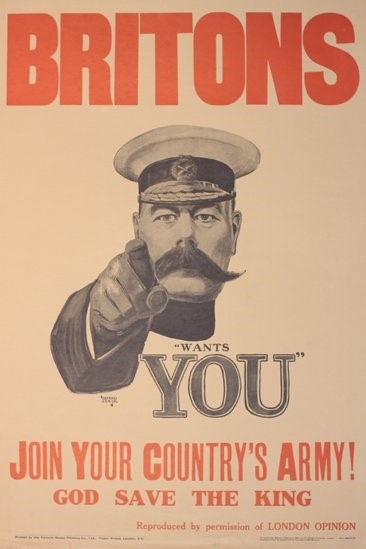
Although conscription was enforced in England, Scotland, and Wales it was not applied to Ireland because of the 1916 Easter Rising, a failed attempt of a revolution by the Irish nationalists to end British rule, meaning that Britain could only rely on Irish volunteers. Yet despite conscription not being imposed on Ireland, the Irish recruits proved to be a significant force in the British army with over 200,000 Irish men serving in the armed forces during the war. Like the soldiers in Observe the Sons of Ulster Marching towards the Somme, the Irish men who fought in the war had willingly volunteered to risk their lives for Britain.
So what where the reasons why so many Irish men volunteered to join the war effort?
The popular view of enlistment is that of huge crowds of men racing to sign up to the army in 1914, desperate to become heroes and to enjoy the glory that war offered, unknowing of the horrific reality and trauma they were letting themselves in for like lambs to the slaughter. However even as the horrifying truth of the war began to surface, endless deaths and casualties making it clear that war was no simple adventure, recruitment continued throughout the war and Irish men continued to volunteer. Therefore, it is important to consider the factors that persuaded so many men to join the army and the rationale behind their decision.
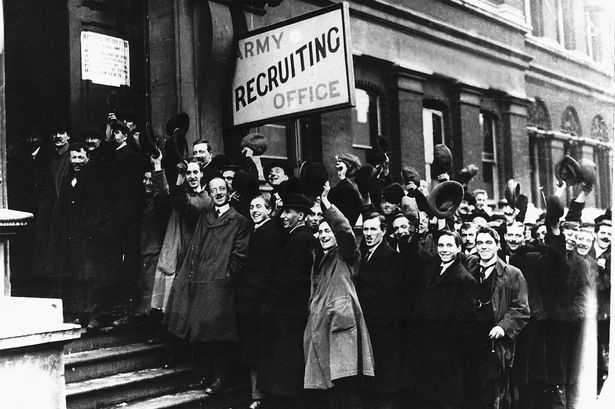
For the unionists in Ireland, the Protestant population who favored upholding British government rule in Ireland, signing up to fight was a matter of proving their unrelenting loyalty to the crown. When their ‘Mother Country’ was in her hour of need, they could hardly stand back and do nothing – as the Ulster Unionist leader Edward Carson said: ‘England’s difficulty is our difficulty.’ Unsurprisingly, there was a huge influx of unionist men who enlisted and this resulted in the creation of the almost entirely Protestant 36th (Ulster) Division – the division that the soldiers in Observe the Sons of Ulster Marching towards the Somme are part of.
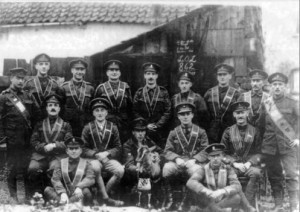
Yet it was not just unionists who felt it there ‘patriotic duty’ to join the army, many Irish nationalists also signed up for patriotic reasons of their own, however, their patriotism was towards Ireland – not Britain. This might seem odd then, that nationalists were signing up to fight for Britain, the country whom they had fought against for centuries opposing their control over Ireland. However, Irish nationalists saw Britain’s role in the war as a just cause – a crusade against ‘Prussian militarism’ in which large nations such as Germany and Austria threatened smaller nations such as Serbia and Belgium. For Irish nationalists, the plight of little Catholic Belgium resonated with their own feelings of suffering under British rule. Through fighting in this war, they were fighting for the freedom of all small nations. As John Redmond, the leader of the nationalist movement, stated in September 1914: "The interests of Ireland, of the whole of Ireland, are at stake in this war… This war is undertaken in defense of the highest interests of religion and morality and right, and it would be a disgrace for ever to our country… and a denial of the lessons of her history… to shrink from the duty of proving on the field of battle that gallantry and courage which have distinguished their race all through its history.’"
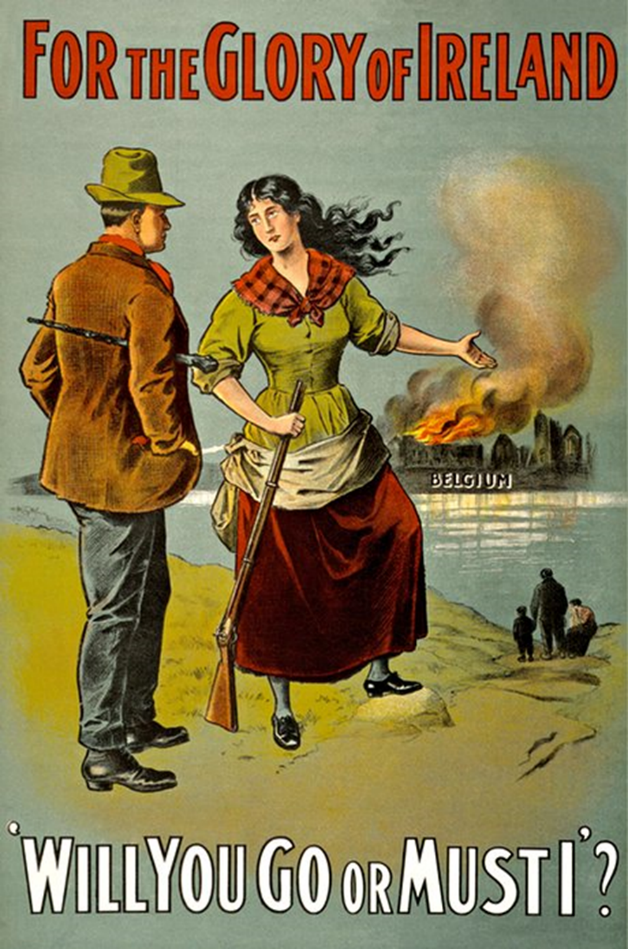
Such words evoked feelings of moral and patriotic duty, leading to thousands of Irish nationalists enlisting to fight for Britain in the hope that victory over Prussia would lead to an eventual victory of independence for Ireland. Of the 80,000 Irishmen that enlisted in the first 12 months of the world, half were from Ulster and half were from the (predominantly Catholic) south – a pattern that remained throughout the duration of the war with enlistment of Irishmen being roughly split half Protestant and half Catholic.
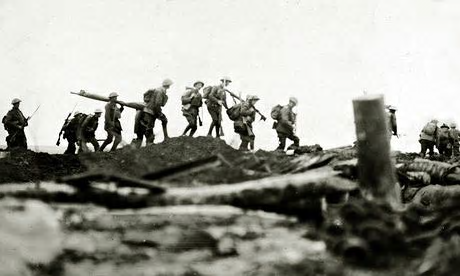
Despite the deep routed divisions that were felt in Ireland, both unionists and nationalists alike felt the immense scale of loss that the war brought. Over 50,000 Irish men were killed fighting in the WW1, 3,500 of which killed in the Battle of the Somme. Yet the shared devastation of war did not create unity in Ireland. In 1919, just one year after the end of the First World War, nationalists were again at war – this time against Britain in the Irish War of Independence.
By Abbie Goodwin
Theatre and Community Intern at the Everyman & Playhouse and final year English and Drama student at Liverpool John Moores University
Websites used:
http://www.theguardian.com/world/2014/apr/05/irish-soldiers-who-fought-for-britain
http://www.qub.ac.uk/sites/irishhistorylive/IrishHistoryResources/Articlesandlecturesbyourteachingstaff/IrelandandtheFirstWorldWar/
http://www.taoiseach.gov.ie/eng/Historical_Information/1916_Commemorations/Irish_Soldiers_in_the_Battle_of_the_Somme.html
http://www.historytoday.com/richard-s-grayson/first-world-war-when-enemies-united
http://www.bbc.co.uk/history/british/britain_wwone/ireland_wwone_01.shtml
Images used:
http://www.bbc.co.uk/schools/0/ww1/25332968
http://www.thejournal.ie/slideshow-irish-world-war-i-recruitment-posters-385408-Mar2012/#slide-slideshow9
http://www.theguardian.com/world/2014/apr/05/irish-soldiers-who-fought-for-britain
http://eastwallforall.ie/?p=2121
http://www.walesonline.co.uk/news/local-news/how-propaganda-pressed-home-world-6068239
http://www.jcbelfast.co.uk/to-the-memory-of-the-fallen/